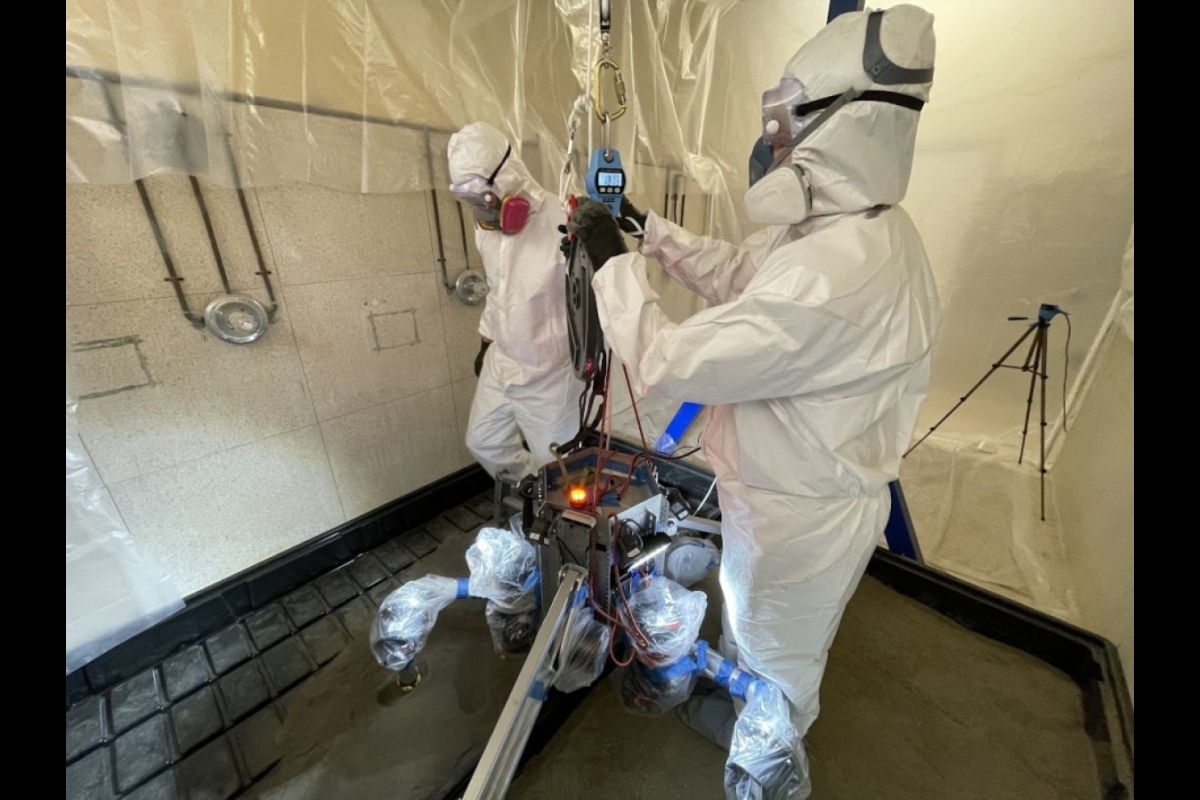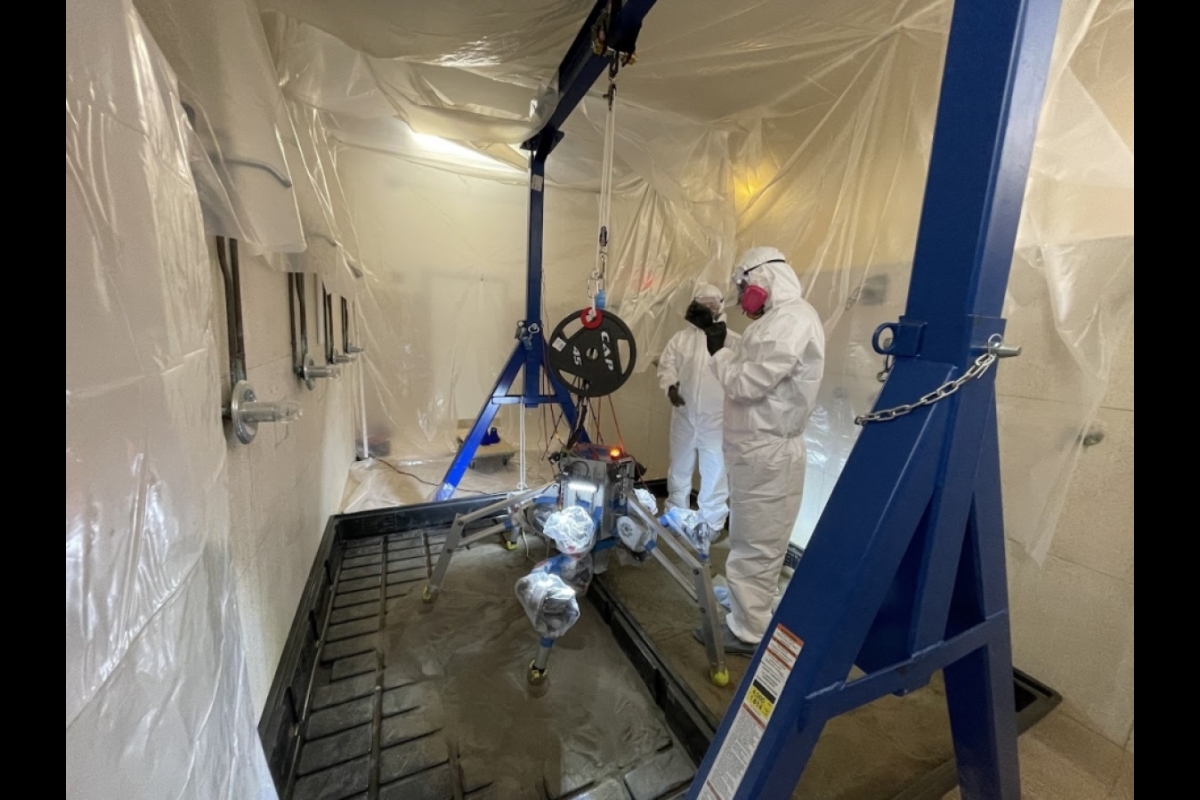Lunar rover project to be featured at NASA forum
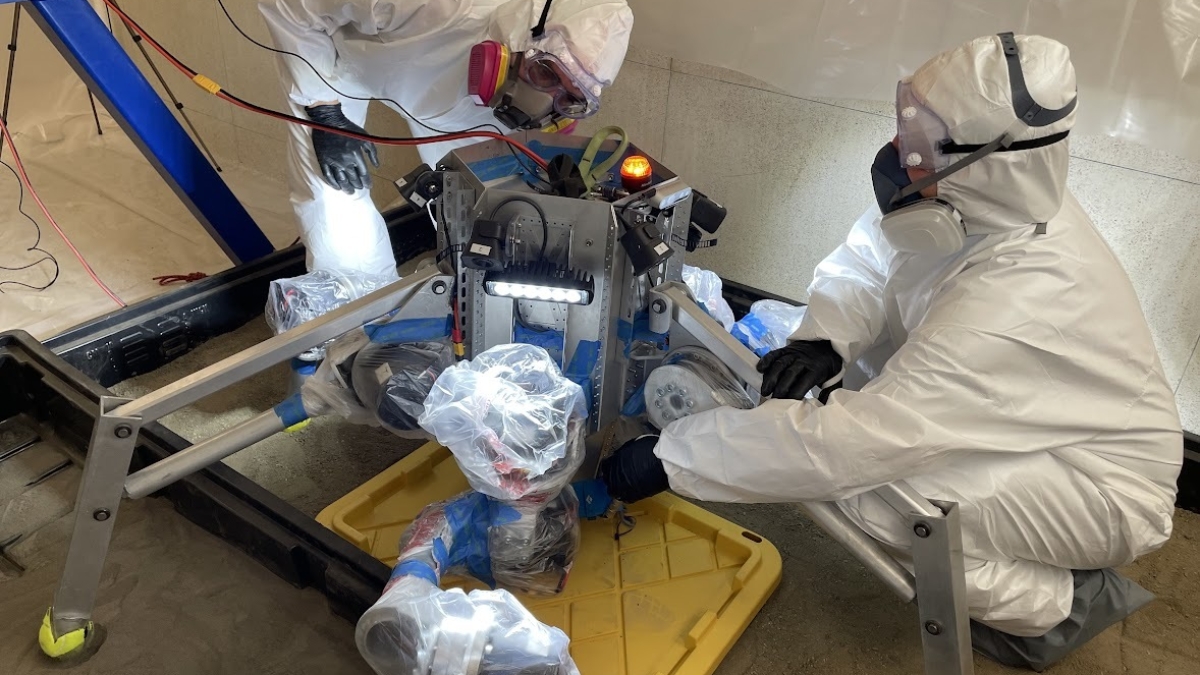
Lab staff members test lunar rover Charlotte in lunar regolith. Photo courtesy of Interplanetary Laboratory
When the the lunar rover nicknamed Charlotte makes its debut at the NASA 2022 BIG Idea Forum next week, it will be the culmination of months of work done by the Luminosity Lab team in collaboration with the Interplanetary Laboratory.
The Interplanetary Laboratory is a one-stop shop providing access to experts, equipment and facilities that groups need to complete their most ambitious research requiring spacecraft hardware and space environmental design, analysis and test.
That’s why the Luminosity Lab approached the Interplanetary Laboratory’s team about working together on Charlotte, a project sparked from a NASA BIG Idea Challenge.
Charlotte is a six-legged lunar rover meant to be tethered to a lander while it roams and collects samples. It is designed to carry Mastcam-Z. Arizona State University's Jim Bell led the development of Mastcam-Z as the principal investigator for NASA's Perseverance rover. Under the direction of Bell, Malin Space Science Systems designed and built the camera.
Over the summer, the Luminosity team used the Interplanetary Lab’s testing capabilities to advance the project. The two groups previously worked together to conduct environmental testing on Velos, another project that sprung from a NASA BIG Idea challenge.
"The Luminosity Lab's creativity has challenged us to expand the types of environments we can test to. They initially asked us to test Velos at lunar temperatures. Then they came back and asked us to create a 64-square-foot lunar sandbox for traction testing — challenge accepted," said Joe DuBois, senior engineer at the Interplanetary Initiative.
A big draw to the Interplanetary Laboratory is the staff working there. Ashley Lepham and Chandler Hutchens, student lab workers nicknamed “lifeguards” for their essential role in managing the lab, lent their expertise to the project.
Lepham designed a sandbox filled with simulated lunar regolith, which is loose moon rock and dust, in which to test the traction of Charlotte’s feet. The sandbox also includes a trapeze system to simulate the reduced gravity of the moon and more accurately simulate the expected conditions on the moon.
Hutchens built a custom cold and heating chamber, which they used for thermal testing and thermal cycling. Using liquid nitrogen, he was able to cool the bottom of the rover’s foot to cryogenic temperatures. Testing with these extreme temperatures reduces the risk that something might go wrong in the eventual mission.
Another way that the Interplanetary Laboratory team reduced the risk in the rover design was by testing the durability of the tether that provides power to the rover from the base station. A test chamber that tested the effects of rubbing against rocks and sharp objects on the lunar surface was built by designing a custom motor that would rub the actual tether over a rock with simulated regolith until the tether broke. This was repeated several times to ensure that accurate data was taken.
Charlotte’s big test comes on Nov. 15, when the team presents at the NASA 2022 BIG Idea Forum. The BIG Idea Forum is the final culminating activity in each team’s challenge participation. The livestream for Charlotte will run from 2:10 to 3 p.m. PT. Following the event, NASA will publish a feature story on www.nasa.gov announcing the winner of the forum on Friday, Nov. 18. The link will be posted on the BIG Idea Challenge website.
The work the student lifeguards are able to do at the Interplanetary Laboratory on this project and others drives not only partnerships, but their future career opportunities.
“In some of the interviews I was in, I brought up that I was part of this project and how I went about taking what the customer wanted and performing it. It showed that I could adapt and be cost effective and timely, which is what employers are looking for,” said Chandler Hutchens, senior aerospace engineering student and student lab lifeguard.
The Interplanetary Laboratory is a shared resource available to faculty and students at ASU as well as external academic groups and industry partners. To inquire about using the lab’s facilities, contact Joe DuBois at jdubois2@asu.edu or Danny Jacobs at dcjacobs2@asu.edu.
More Science and technology
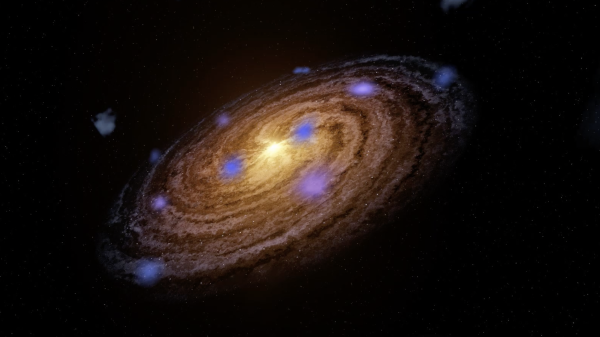
Cosmic clues: Metal-poor regions unveil potential method for galaxy growth
For decades, astronomers have analyzed data from space and ground telescopes to learn more about galaxies in the universe.…
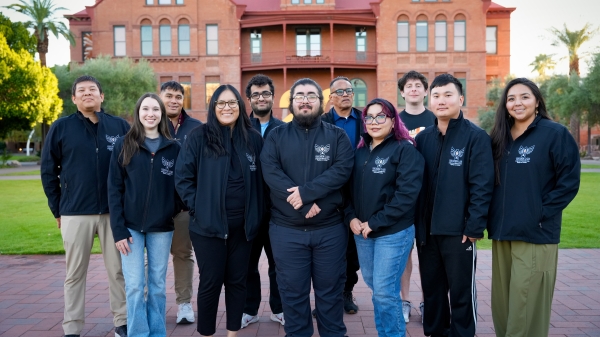
Indigenous geneticists build unprecedented research community at ASU
When Krystal Tsosie (Diné) was an undergraduate at Arizona State University, there were no Indigenous faculty she could look to…

Pioneering professor of cultural evolution pens essays for leading academic journals
When Robert Boyd wrote his 1985 book “Culture and the Evolutionary Process,” cultural evolution was not considered a true…
